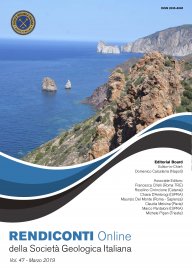
“L’uomo universale del primo Rinascimento”: la geologia nel De re aedificatoria di Leon Battista Alberti
Marco Romano (1)
(1) Evolutionary Studies Institute (ESI), School of Geosciences, University of the Witwatersrand, Johannesburg, South Africa.
Corresponding author e-mail: marco.romano@uniroma1.it.
Volume: 47/2019
Pages: 185-201
Abstract
The geological elements found in the De re aedificatoria by Leon Battista Alberti are discussed for the first time in detail. In Alberti we find the enlightened conception of how architectural works must be conceived to adapt to natural processes and their evolution, and not vice versa. The great architect uses, in a first place, a purely
pragmatic approach to geological knowledge. Noteworthy elements are the detailed study of historical earthquakes to get an idea of ‘seismic hazard’ characterizing a specific area, a deep understanding of the evolution of river systems, the use of wells to investigate the composition of the terrains in the underground to build solid
foundation. These pragmatic elements are also accompanied by more theoretical interpretations, including very interesting reasoning about diagenesis, and on sedimentological aspects such as gradation, events of flooding and fluvial deposition, and river systems progradation due to the secular sediment supply. In his scientific interpretations, and in the new proposed vision of art, Alberti manages to reconcile in a harmonious way the innovations made by Brunelleschi, Masaccio and Donatello, fully embodying the spirit of the Florentine Renaissance, where art presupposes a profound understanding of nature and not its simple imitation in artist works.
Keywords
Get Full Text